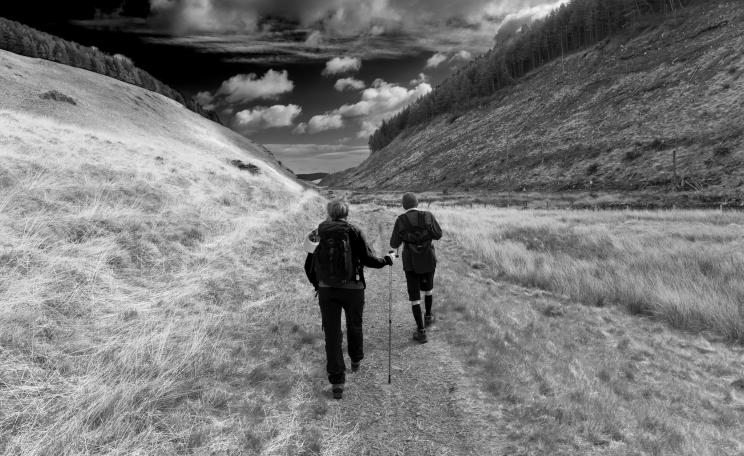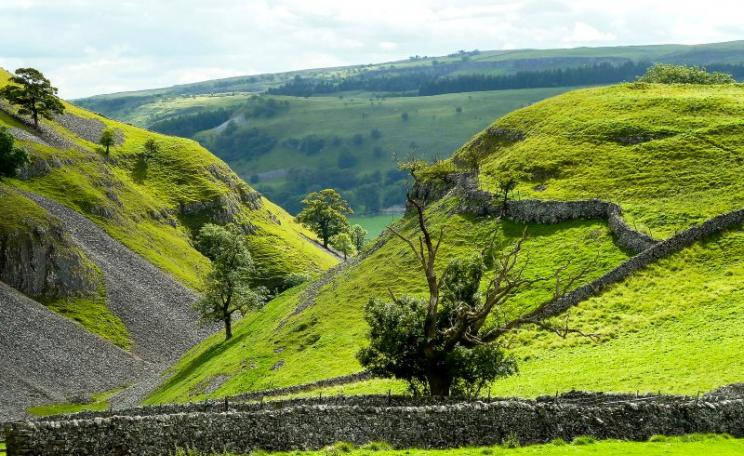Environmental protection, from renewable energy through to biodiversity, has to walk the uneasy line between being profitable, and being effective
The birds that migrate freely across Europe are unaware of the invisible borders that lie below them. They follow the same routes that have carried them to warmth every year for an eternity, marked out by the indomitable features of the landscape - the coast of the Atlantic on one side and the curve of the Carpathian Mountains on the other. But it is what they miss that matters most; their future, along with that of the rest of us, is dictated by the political and economic tides that shift shape across the continent.
In this day, with growth and progress honoured above all else, the natural world is at the mercy of human endeavour. Allowed to run its course, the open market will drain the land of all life over and above what is fundamental for its own survival. The more fragile and economically superfluous species of the world - the lynxes and lesser spotted eagles, right down to the field cricket or river jelly lichen - remain only for as long as we consider their existence a moral imperative, and their extinction as a cause for shame. It is this that drives conservation.
But shame and morality are, of course, culturally relative, and fickle even then. Nature however, is not. Successful conservation programs, for airborne and water bound species in particular, require policies that stretch beyond national borders and legislation that draws from the same rule book across the board.
It is argued that only an overarching governing body, funded from across the European continent and traceable back to a supreme court, can implement the far reaching conservation programs needed to have a genuine impact.
This is the same logic that has, in theory, steered Europe’s environmental policies from the beginning. From the creation of the Birds Directive in 1979, through to the Habitats Directive and finally the combined network of over 26,000 protected sites held together as Natura 2000, the idea that our wildlife is a shared heritage and thus its protection requires international cooperation has been a central premise.
But nature conservation was a long way from the thoughts of the original Six at the treaty of Paris in 1951 as they drew out the terms of the European Coal and Steel community, the alliance that would go on to form the backbone of the European Union. Emerging out of a continent torn apart by war and hampered by decades of recession, peace was the Union’s founding principle, and economic growth and prosperity its scaffolding.
Environmental protection, from renewable energy through to biodiversity, has to walk the uneasy line between being profitable, and being effective
Today, over 60 years on, that scaffolding bows under its own weight as, in a beautiful irony, the reckless pursuit of growth threatens to bring the very structure it was intended to support to its knees. Now inexorably tied to its path, the environmental policies of the EU are, in general, designed to mitigate the side effects of a feral economy, while putting as little obstruction as possible in its way. Environmental protection, from renewable energy through to biodiversity, has to walk the uneasy line between being profitable, and being effective.
When Ritt Bejerregaard, The European Commissioner for Environment at the time, gave her speech at the ‘Natura 2000 and People’ conference in 1998, her main message was that nature conservation and economic development can walk hand in hand. “It is a partnership” she told the crowd; “Nature includes people, and people are part of nature.” She went on to pre-empt the rebuttal, expressing her own fears that “too often (a partnership) is an arrangement where both sides take what they can get, leaving the other to fend for itself.” But in this case, she assured, people have had enough of that attitude; ‘they expect to play their part, and they expect others to do so as well.’
It is this vague sense of optimism and faith that still holds Natura 2000 together today. The area covered by the network has grown to encompass almost 1/5 of Europe’s landscape, but in doing so it has had to keep regulations lax, and shift the control over them almost entirely to the member states. With the economy still struggling through deep-biting recession, this has, especially in Europe’s East, meant that far too often business has carried on as normal. Mining projects, intensive agriculture and environmentally insensitive development have again and again slipped through the legislative cracks.
The most regular culprit however both throws up the most questions and is, paradoxically, the least talked about. Renewable energy developments, most commonly wind farms, solar parks and hydroelectric plants, puncture Natura 2000 sites across the continent, in many cases breaking both the environmental impact guidelines issued by the EU and the laws of their host countries. All too often the developments go ignored, with the green lobby excusing them as a necessary force for good, and the local council and landowners paid off for the use of the land.
Though a move to sustainable forms of energy is an ecological necessity, its implementation functions like any other industry. Renewable energy companies are drawn to these remote areas because land is cheap, human habitation scarce and natural resources plentiful. The burden of tighter environmental regulations is, invariably, easily got around, as the environmental impact assessments (EAIs) are paid for by the renewable companies themselves. As Marina Cazacu from BirdLife International says, “the quality of EIAs is very variable. In many cases they just repeat what the company tells them - stating that there is no conflict between the development and the surrounding environment.”
This has been the case all along the Dobrogea flyway, the busy migratory route that carries Lesser Spotted Eagles, Sakor Falcons, Reed Breasted Geese and many others through Romania, Bulgaria and down to the Bosphorus straights in Turkey. Large swathes of the route are protected by Natura 2000 sites, but this hasn’t stopped the planning of over 5,000 wind turbines in the region, 752 of which fall directly within the Romanian protected sites, while hundreds more are already up and running in Bulgarian sites. The impact on the passing birds, many of which are already endangered, could be devastating. It has been seen before in Spain and California where, over time, collisions with turbines has bought the populations of larger birds, that have typically long life spans and low reproductive rates, down to critical levels.
But, unanimously, the proposals for the wind farms came backed by EIA reports testifying that minimal conflict arises between the turbines and the natural environment. The ministries for environment of both Romania and Bulgaria were quick to accept these reports on face value, eager not to lose the custom of this well subsidized and rapidly growing industry.
Opposition has fallen to individuals and NGOs, working to provide alternative EIAs on limited funding and against a ticking clock; once the turbines are up, they are not coming down.
Milvus Group a Romanian ornithological and environmental protection organization, has staged camps over the last two years to count the number of Raptors that would be impacted directly by the turbines. The evidence is conclusive; proposed turbines at sites across the country unequivocally contravene European environmental guidelines. But this is not enough. The report must then go through the Romanian Environmental Agency and, if accepted, on to the European Commission. If it gets this far, the legal process is slow and, invariably, too late.
This is what happened in Bulgaria where, in November last year, the Government finally capitulated under the pressure put on it by the RSPB and its Bulgarian partners, and passed a law prohibiting the construction of wind farms and solar parks in all Bulgarian Natura 2000 sites. “It’s a fantastic result for us” says Daniel Pullan from the RSPB, “but it comes too late”; the bulk of proposed wind farms are already up and running.
Tamas Papp, the director of Milvus, says that the Natura 2000 label hasn’t provided the protection it promised. “The power of regulation over the sites is too dispersed. It makes challenging insensitive developments a long and convoluted process, and it’s very hard to get results. Natura 2000 was created to protect a shared heritage, but its atomized control means that our wildlife is still subject to the varying politics of each member state.”
The move to green energy is supported by much stronger central policy. The subsidies and advice given from Brussels have spurred rapid growth in the industry and at this point it looks set to meet and in many cases surpass the targets set for 2020. Biodiversity levels on the other hand have missed every target set out for them and, until the EU continues to give this less profitable form of environmental protection the same support as it does renewable energy, they will continue to do so.
Luke Dale-Harris is a freelance journalist and documentary maker living in Transylvania, Romania.
Image courtesy of www.shutterwtock.com







